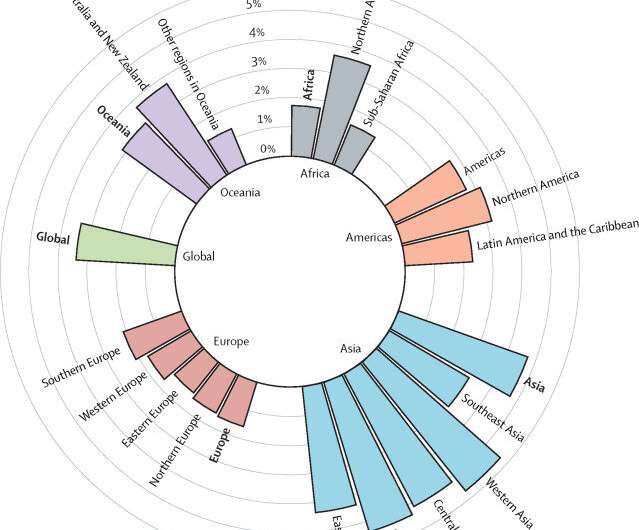A Monash-led study, published in The Lancet Planetary Health, has revealed that from 2000 to 2019, an average of 1.75 million deaths each year were associated with temperature variability (unstable temperatures).
The study, using data from the MCC Collaborative Research Network, explored the association between temperature variability and mortality in 750 locations across 43 countries or regions.
Deaths as a result of temperature variability accounted for 3.4% of all deaths globally between 2000 and 2019. Asia, Australia, and New Zealand had a higher percentage excess in mortality than the global mean.
Globally, the percentage excess in mortality increased by about 4.6% per decade. The largest increase per decade occurred in Australia and New Zealand (7.3%), followed by Europe (4.4%) and Africa (3.3%).
Increased risk of death is associated with short-term temperature variability, but until now, there's been no comprehensive assessment of the temperature variability-related mortality burden worldwide.
Professor Yuming Guo, Director of the Monash Climate, Air Quality Research (CARE) Unit, said more attention should be paid to the health impacts of temperature variability.
"Climate change is a major public health concern of the 21st century. Our findings show that temperature variability has similar impacts to air pollution on global mortality," Professor Guo said.
"With temperatures becoming increasingly unstable, proactive countermeasures are necessary to protect human health against temperature variability.
"Many policies have been developed to cope with the threat of climate-related extreme events, for example, warning systems for heatwaves and air pollution. However, these policies and strategies rarely exist to cope with the adverse health impacts of temperature variability."
- Karlston
-

 1
1



Recommended Comments
There are no comments to display.
Join the conversation
You can post now and register later. If you have an account, sign in now to post with your account.
Note: Your post will require moderator approval before it will be visible.